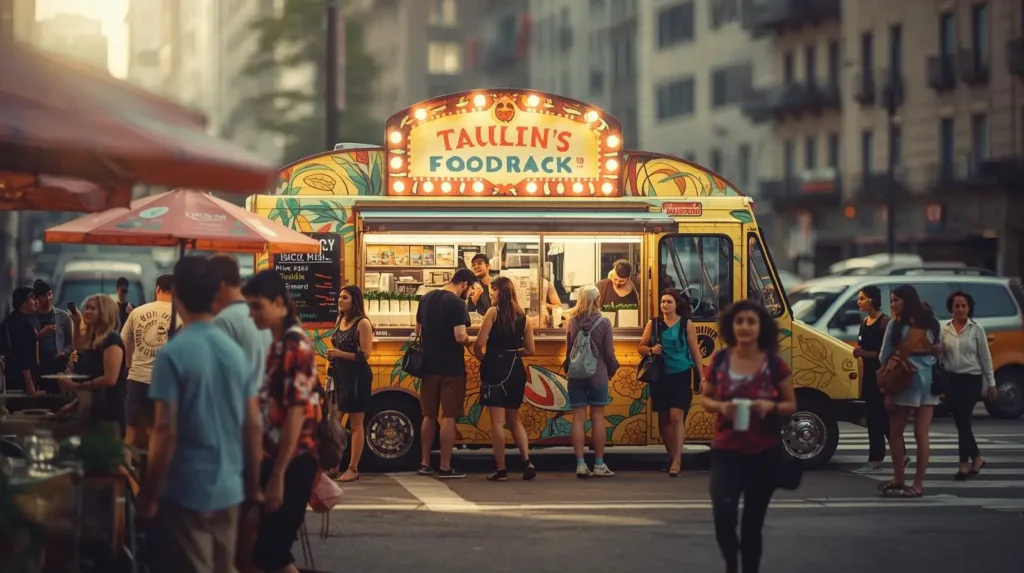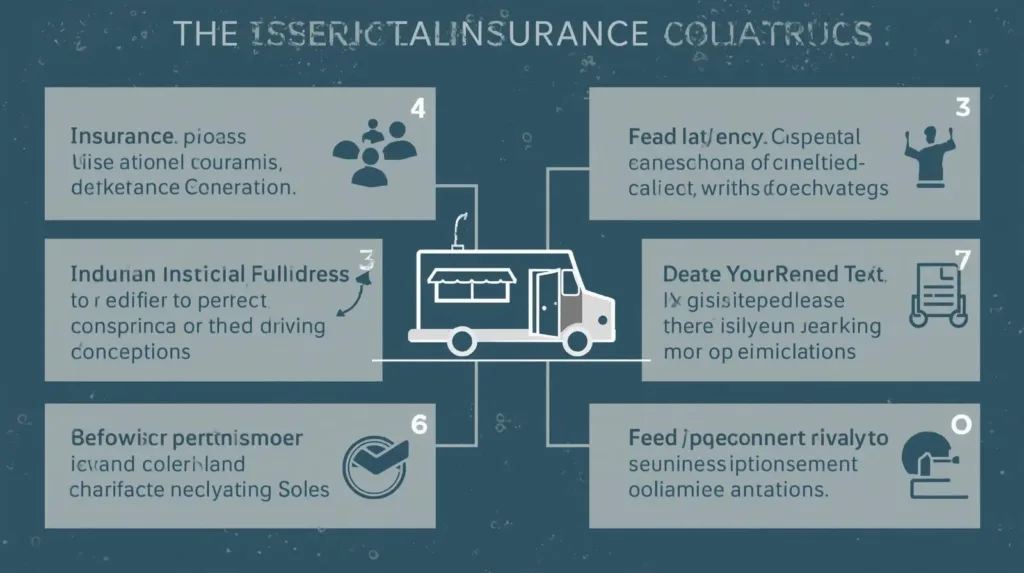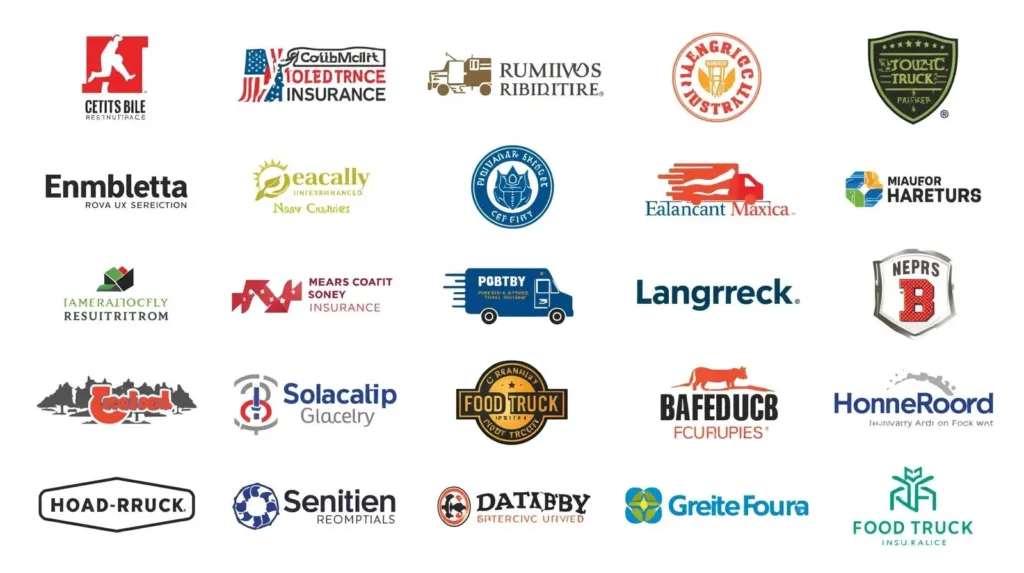Why Food Truck Insurance Matters in 2025
Starting or running a food truck in the USA? You’re part of a booming industry valued at over $1 billion, with thousands of mobile kitchens serving everything from tacos to gourmet burgers. But with great flavors comes great responsibility—especially when it comes to insurance. Commercial food truck insurance protects your business from accidents, theft, and lawsuits, ensuring you stay on the road without financial headaches.
In 2025, as food trucks adapt to post-pandemic trends like sustainability and digital payments, insurance needs are evolving too. This guide breaks down everything you need to know, from coverage types to costs, tailored for USA-based owners and operators. Whether you’re a newbie entrepreneur or a seasoned vendor, read on to safeguard your rolling restaurant.

What Is Commercial Food Truck Insurance?
Commercial food truck insurance is a specialized policy designed for mobile food businesses. Unlike personal auto insurance, it covers the unique risks of operating a vehicle that’s also a kitchen. This includes protection against customer injuries, equipment damage, and food-related liabilities.
Why do you need it? Most states require at least basic liability coverage for commercial vehicles. Plus, venues like festivals or markets often demand proof of insurance before letting you set up. Without it, a single mishap—like a grease fire or a slip-and-fall—could wipe out your profits.
According to industry experts, food truck insurance combines elements of commercial auto, general liability, and property insurance into one package. It’s essential for compliance and peace of mind in the fast-paced food truck world.
Types of Coverage: Essential Protections for Your Food Truck
Food truck insurance isn’t one-size-fits-all. Policies typically bundle several coverages to address the multifaceted risks of your business. Here’s a breakdown of the key types:
- General Liability Insurance: Covers third-party claims for bodily injury, property damage, or advertising injury. For example, if a customer gets food poisoning or slips near your truck, this kicks in. Average cost: $42 per month.
- Commercial Auto Insurance: Protects your truck in accidents, theft, or vandalism. Includes liability for damages you cause to others and comprehensive for non-collision incidents. Minimum requirements vary by state, often starting at $300,000.
- Workers’ Compensation: Required in most states if you have employees. Covers medical bills and lost wages for work-related injuries. Cost: Around $46-$207 monthly, depending on your team size.
- Inland Marine/Equipment Coverage: Insures your cooking tools, generators, and inventory against theft or damage while in transit. Vital for expensive gear like grills or refrigerators.
- Product Liability: Specific to food businesses, this covers claims from contaminated or spoiled food causing illness.
- Business Owner’s Policy (BOP): A bundle of general liability and property insurance, often cheaper than buying separately. Average: $84 per month.
Additional options like cyber insurance are gaining traction as food trucks go digital with apps and online orders.
Food Truck Insurance Costs in 2025: What to Expect
Budgeting for insurance is crucial for food truck profitability. In 2025, costs have risen slightly due to inflation and higher claims, but smart shopping can keep them affordable.
- Average Monthly Cost: $125-$300 for comprehensive coverage, or $1,500-$3,600 annually.Basic policies start as low as $25 per month.
- Factors Influencing Price:
- Location: Higher in urban areas like New York or California due to traffic and theft risks.
- Truck Value: Newer, customized trucks cost more to insure.
- Driving Record: Clean records save money.
- Coverage Limits: Higher limits mean higher premiums.
- Business Size: More employees or multiple trucks increase costs.
For example, commercial auto alone averages $170 monthly.Compare quotes from multiple providers to find deals—savings up to 25% are possible.
Trending in 2025: Usage-based insurance, where premiums adjust based on your driving habits, is becoming popular for cost-conscious owners.

Best Food Truck Insurance Providers in the USA
Choosing the right insurer can make all the difference. Based on 2025 reviews, here are top picks for reliability, affordability, and specialized coverage:
- Progressive Commercial: Best for customizable policies including liability for customer illness. Quick quotes online.
- FLIP (Food Liability Insurance Program): Top for affordability, starting at $25.92/month. Great for trailers and general liability.
- NEXT Insurance: Ideal for fast online purchases; covers food trucks in under 10 minutes. Strong on digital tools.
- Huckleberry: Overall best for comprehensive options, including short-term coverage.
- The Hartford: Excellent for bundling with workers’ comp; partners with specialists for food trucks.
- Geico: Best for multiple coverage types and nationwide availability.
Compare these via aggregators like Simply Business for the best fit.
State-by-State Insurance Requirements for Food Trucks
Insurance rules vary across the USA, so check local laws. Most states mandate commercial auto liability, but specifics differ:
- Minimum Liability: Often $300,000-$750,000 for bodily injury and property damage.
- Workers’ Comp: Required in 48 states if you have employees. Exceptions: Texas and South Dakota.
- Examples:
- California: High minimums due to dense traffic; proof needed for permits.
- New York: Emphasizes workers’ comp and liability for urban operations.
- Florida: Focus on comprehensive for weather-related risks.
- Texas: No workers’ comp mandate, but recommended.
Always consult your state’s DMV or insurance department. Local municipalities may add requirements for events.
How to Choose and Buy Food Truck Insurance
Selecting the right policy? Follow these steps:
- Assess Risks: Evaluate your operations—daily routes, menu, and staff.
- Get Multiple Quotes: Use online tools from providers like NEXT or FLIP.
- Check Coverage Gaps: Ensure food-specific liabilities are included.
- Review Discounts: Safe driving or bundling can save 10-25%.
- Work with Agents: For complex needs, consult specialists like Insure My Food Truck.
Buy online for speed, or via agents for personalization. Always read the fine print!

FAQ: Common Questions About Food Truck Insurance
What is the minimum insurance required for a food truck in the USA?
Most states require at least $300,000 in commercial auto liability, plus workers’ comp if you have employees.Check your state’s specifics.
How much does food truck insurance cost per year?
On average, $1,500 to $3,600, but it can start at $299 for basic coverage.
Does food truck insurance cover trailers?
Yes, many policies like FLIP’s include trailers. Confirm with your provider.
Can I get short-term food truck insurance?
Absolutely—providers like Thimble offer event-based or monthly options.
What if my food truck is electric—does insurance differ?
Trends show specialized coverage for EVs, often with incentives for green tech.
How do I file a claim?
Contact your insurer immediately; many offer 24/7 apps for quick processing.
Conclusion: Protect Your Food Truck Dream Today
Commercial food truck insurance in the USA isn’t just a requirement—it’s your safety net in a dynamic industry. With costs manageable and providers offering tailored options, there’s no excuse to go uninsured. As 2025 brings growth and innovation, stay ahead by reviewing your policy annually.
Ready to roll? Get quotes from top providers and hit the streets confidently. Share your experiences in the comments— what’s your biggest insurance tip?

yanatec.in Best ai for image generation of 2025, New car and bike update, ArtCAM 2018 and tech news, software reviews update.
